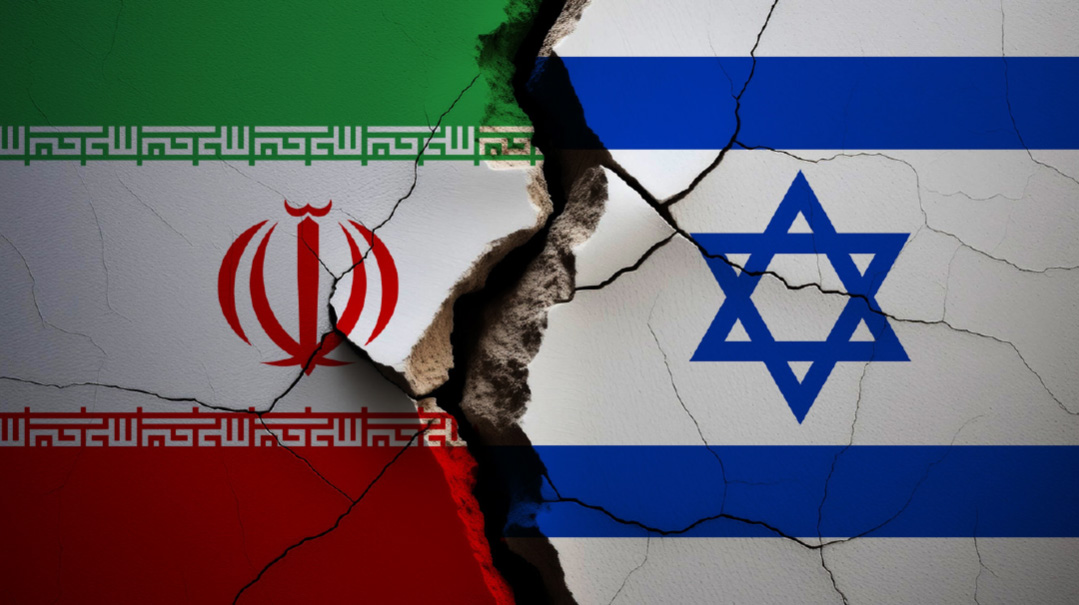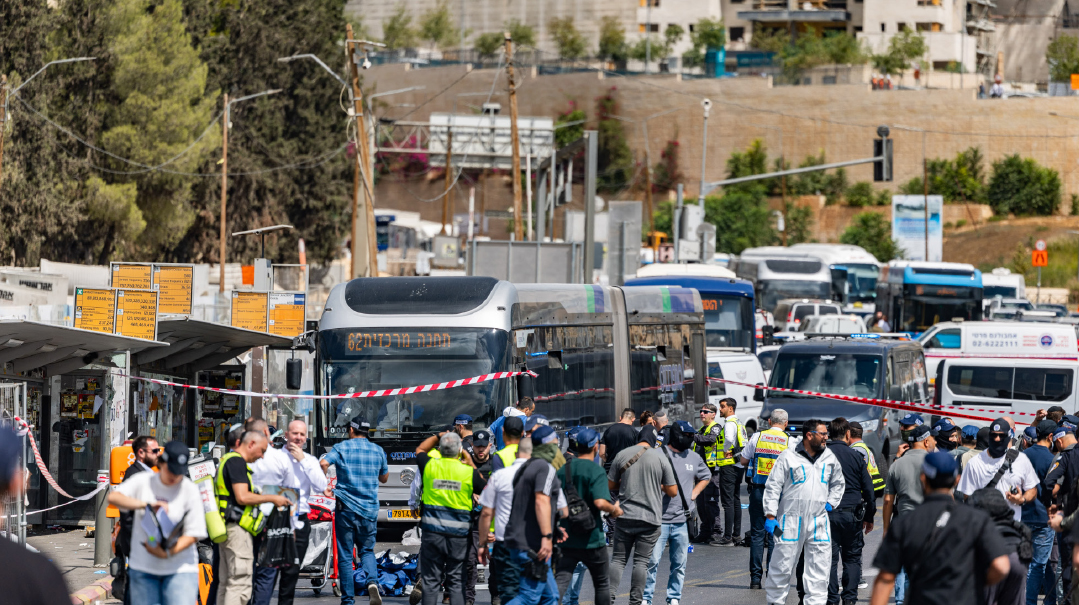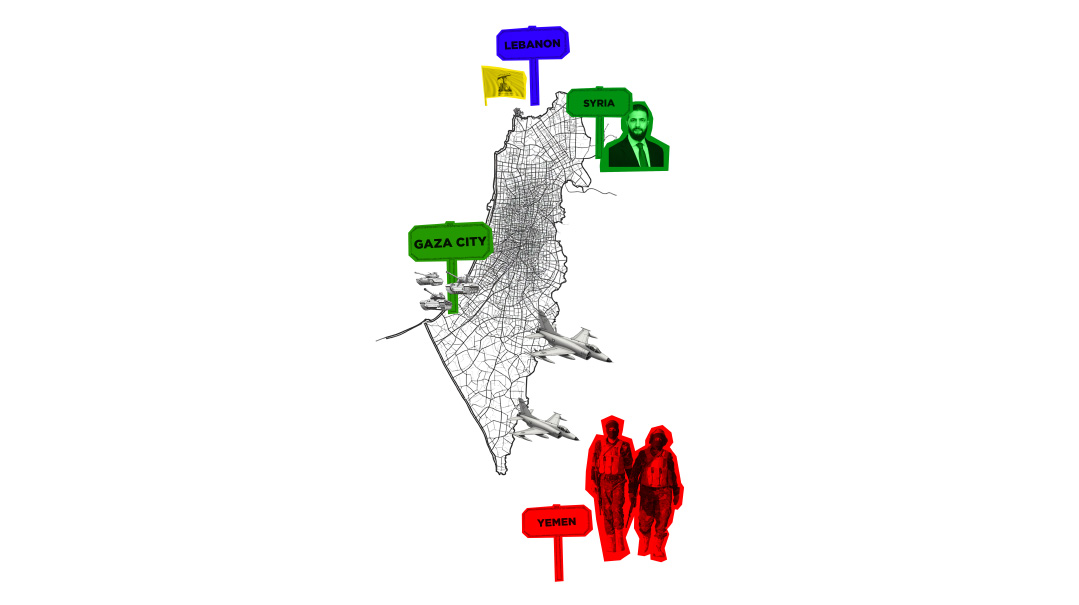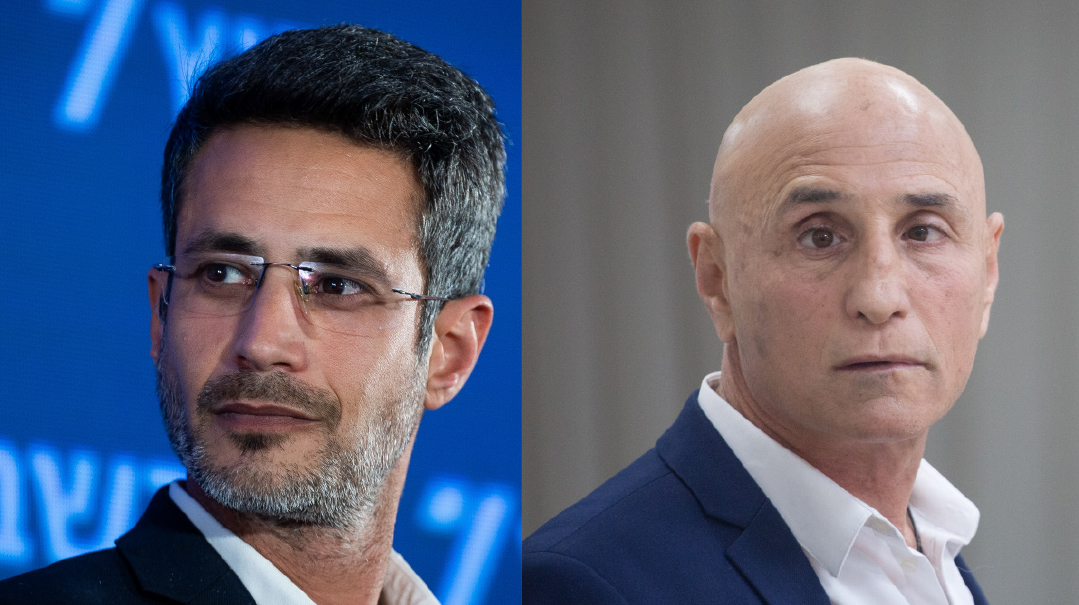Taking the Fight to the Source
| October 8, 2024As Israel deals devastating blows to Iran’s proxies in Gaza and Lebanon, direct conflict between the two foes now looks inevitable

A year after October 7, the nightmare scenario that the security establishment has warned of for decades is finally upon us. What began as an operation to destroy Hamas after the horrific massacre of Simchas Torah has become a multifront war that threatens to engulf the entire Middle East. And as Israel deals devastating blows to Iran’s proxies in Gaza and Lebanon, direct conflict between the two foes now looks inevitable.
Last week Iran launched 181 ballistic missiles at Israel in its “True Promise 2” operation, a spin-off of its failed April attack. The IDF says the Iranians didn’t hold back and used their best weapons, but thanks to chasdei Shamayim, adequate preparations, and responsible behavior by the public, not a single Israeli citizen was killed.
Effective air defenses also helped; 85 percent of the launches were intercepted or landed outside Israel’s borders, and only a few dozen missiles hit Israeli air bases, which suffered minor damage that didn’t impact their operational functioning. Not a single fighter plane was hit. The Iranians claimed to have fired hypersonic missiles, a laughable claim that was refuted by the IDF and international experts. The Iranians don’t possess such technology, and likely never will.
What do the Iranians have? Proxies. A lot of them.
Hezbollah is the most powerful Iranian proxy force, the IRGC’s flagship project. The regime has spent billions of dollars in founding and arming the Shiite terrorist group in the Land of the Cedars, and uses it to promote its interests across the region — in Iraq and Afghanistan, in propping up the Assad regime in Syria, and of course, in the ongoing conflict with Israel.
Hezbollah posed the biggest threat: weapons depots stocked with more than 150,000 rockets and missiles; regiments of elite, battle-hardened Radwan forces on the border; vast, sophisticated tunnel networks; and a sophisticated drone operation that threatened Galilee residents. For most of the last year, Hezbollah wore down northern towns and outposts with thousands of rockets and anti-tank missiles, in preparation for a war that was predicted to be magnitudes of difference harder than the war against Hamas.
And suddenly, the menace evaporated. It started with the beeper operation, widely attributed to Israel; continued with powerful, accurate strikes on the arms depots; and ended with a spectacular string of hits on Hezbollah’s leaders, culminating in the assassination of Secretary-General Hassan Nasrallah, and shortly afterwards, his successor.
This paved the way for what the IDF has been preparing for over the past 12 months, the ground operation in southern Lebanon. The invasion is seen as a critical step for returning northern residents to their homes. Until the tunnels networks and weapons stockpiles threatening the Galilee are dismantled, residents won’t return home, and that can only be done on the ground.
Turnaround
IT has now been revealed that the IDF has conducted dozens of cross-border raids over the past months, setting the stage for the full-scale incursion that began last week. Hezbollah’s response has been weak. While it’s expanded its range of fire to a distance of about 300 kilometers, from the border to Maaleh Adumim, between Jerusalem and the Dead Sea, it hasn’t been able to rebuild its operational capabilities and carry out missile fire on a truly massive scale — mainly for the technical reason that there’s no one left to give the commands. The senior chain of command has been almost completely wiped out.
In addition, per foreign intelligence reports, the Israeli operations have cost Hezbollah 50 percent of its command-and-control capabilities and 85 percent of its launching capabilities. The arms depots may still be stocked, but there’s no one left to move the missiles into launching position, and even if there were, it’s almost impossible for them to do it without being detected. Even if that were possible, almost everyone responsible for giving the orders was taken out by the beeper operation.
The balance of power in the Middle East is beginning to shift away from Iran. Israel has regained much of the deterrence power it lost on October 7. But one worrisome consequence of this turnaround is the possibility that Iran will accelerate its nuclear program.
“The fact that Iran has clearly lost Hamas and Hezbollah as effective deterrents means that a growing number of figures in the Iranian establishment will want to develop nuclear weapons,” Boston University’s Professor Arash Azizi told the BBC.
Yezid Sayigh, a former Palestinian representative at the Carnegie Center for the Middle East, also warned that “it’s possible that in Iran’s perception, the only tool left in their arsenal is the nuclear program.”
For this reason, and because there may never be a better opportunity, Iran’s nuclear facilities are in Israel’s target bank for its retaliatory strike, which is expected at any moment.
Israel will try to replicate its successful attack on the Houthi oil facilities, which caused the Yemenite terrorist group enormous economic damage, with Iranian financial targets also on the table. However, Iran isn’t the Houthis, and Israel is determined to respond in a way that will preserve Israeli deterrence and keep Iran out of the arena for the next few years at least.
Since the sucker punch of October 7, Israel’s strategy has changed. Instead of trying to avoid escalation, the IDF has cranked up the heat. Tactics that were unthinkable are applied, targets thought to be off the table are bombed. Instead of fearing the outbreak of pandemonium, Israel instead wants to bring it on. Now the question is how far that strategy will go.
(Originally featured in Mishpacha, Issue 1032)
Oops! We could not locate your form.







